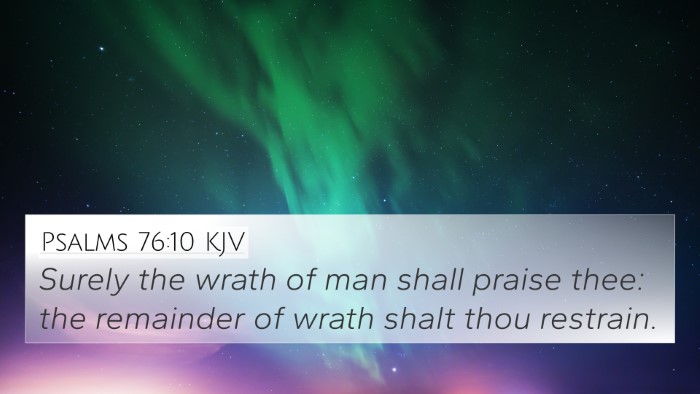Understanding John 7:53
John 7:53 states, “And every man went unto his own house.” This seemingly simple verse serves as a transition point in the narrative of the Gospel of John, leading into the account of the woman caught in adultery (John 8:1-11). To understand the implications and meanings within this passage, we must consider various biblical commentaries and cross-references, forming connections that deepen our comprehension.
Verse Significance
This verse marks the conclusion of a significant portion of Jesus' interaction with the Jewish authorities and the crowds surrounding Him. The narrative prior reflects a growing tension surrounding Jesus' identity and authority, culminating in this moment of dispersion, where the people return to their homes. The commentaries provide valuable insights into the thematic and historical context.
Commentary Insights
Matthew Henry's Perspective
Matthew Henry notes that this verse illustrates the behavior of the people faced with Jesus’ words. They are confused and uncertain, leading them to retreat to their own homes instead of embracing the truth He offers. This reflects a spiritual choice—a movement away from Jesus after hearing His challenging teachings. It emphasizes the varying responses to Jesus, some of which lead to belief, while others retreat.
Albert Barnes' Interpretation
Albert Barnes highlights that the departure of the people illustrates their disconnection from the truth of Christ. Despite hearing His profound teachings, many were still unwilling to accept Him fully. Barnes indicates that the phrase "every man went unto his own house" may symbolize a retreat to their former lives and beliefs, contrasting with the profound spiritual truths Jesus presented. It signifies a missed opportunity for enlightenment.
Adam Clarke's Analysis
Adam Clarke offers an additional layer of insight, emphasizing the situation's context. He explains that this was during the Feast of Tabernacles, a time of religious fervor, yet, amidst this, many chose comfort over conviction. Clarke points out that this reaction was indicative of greater societal and religious dynamics at play, revealing the hearts of the people and their resistance to change.
Thematic Connections and Cross-References
To deepen our understanding of John 7:53, we can examine several key cross-references that highlight similar themes of rejection, unbelief, and the call to spiritual awakening:
- Matthew 13:14-15: “And in them is fulfilled the prophecy of Isaiah, which saith, By hearing ye shall hear, and shall not understand; and seeing ye shall see, and not perceive...” - Reflecting the hardness of heart.
- John 1:11: “He came unto his own, and his own received him not.” - Emphasizing the theme of rejection by those who were expected to believe.
- John 8:12: “Then spake Jesus again unto them, saying, I am the light of the world: he that followeth me shall not walk in darkness...” - Calling for people to step out of their homes and into the light.
- Acts 7:51: “Ye stiff-necked and uncircumcised in heart and ears, ye do always resist the Holy Ghost...” - A reminder of the continuous pattern of resistance to God’s message.
- Luke 10:10-12: "But into whatever city ye enter, and they receive you not..." - Illustrating the consequences of rejecting God's emissaries.
- Isaiah 55:6: “Seek ye the Lord while he may be found, call ye upon him while he is near.” - Encouraging us to pursue truth instead of retreating.
- James 4:8: “Draw nigh to God, and he will draw nigh to you...” - The invitation to draw nearer to God rather than stepping away.
Cross-Referencing Techniques
When exploring Bible verses that connect with John 7:53, implementing cross-referencing tools can significantly enhance your study. Here are some tips on how to effectively utilize these tools:
- Use a Bible Concordance: This can help you locate similar themes and parallel verses throughout scripture.
- Employ a Cross-Reference Bible Study: A specific Bible designed with margins full of interconnected verses aids in identifying patterns and themes.
- Engage in Comparative Bible Verse Analysis: Study passages side by side to observe differing perspectives on similar topics.
- Utilize Digital Resources: Many Bible study apps provide quick cross-referencing features for comparative analysis.
Conclusion
In understanding John 7:53, we see more than just a transitional point; it encapsulates a significant moment reflecting the spiritual climate surrounding Jesus' ministry. It invites believers to consider their reactions to Christ’s words and the broader invitation to step into a transformative relationship with Him. Through various commentaries and cross-references, we grasp the deeper significance and thematic connections within scripture, strengthening our faith through a comprehensive biblical exploration.






